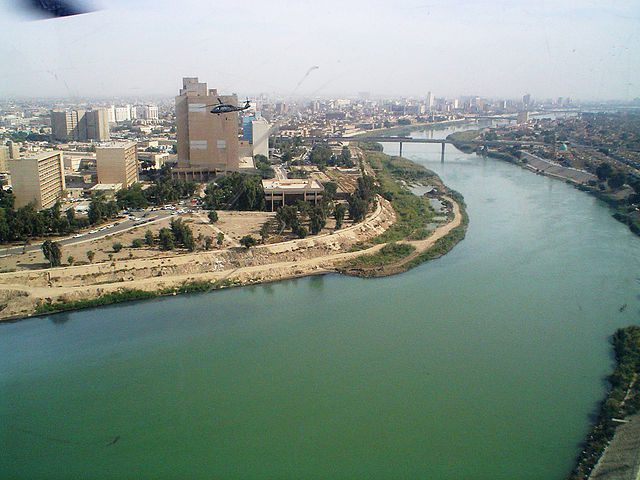
The manuscript continues:
In the middle of the eighth century, a revolt commenced in far-off Khurasan, in the area of what is today Afghanistan or eastern Iran. This was an area occupied largely by non-Arabs, who resented their second-class status within the empire. The revolutionaries also appealed to the Shiites by claiming that they were acting on behalf of an unnamed member of the Prophet’s family. Pious Muslims flocked to the black banners of the rebels, hoping for an overthrow of the hated Umayyads and their worldly ways.[1] (The unnamed relative of Muhammad was the Prophet’s uncle Abbas—who had accepted Islam only at the last moment, when it became clear who was going to win. This was an omen of things to come, for those who had eyes to see it.)
In the year 750 A.D., the Umayyads were overthrown and replaced by a new dynasty called the Abbasids.[2] The capital was moved from Damascus, in Syria, eastward to Iraq., to be closer to the Abbasid power base. Soon thereafter, the Abbasids actually founded a new city, Baghdad, to be their capital. It rapidly became the unrivalled cultural and economic center of the empire and one of the great cities of human history. For those who had supported the Abbasid revolt out of idealism, however, the triumph proved a hollow one. Nearly everybody was disappointed with the results, but the disappointment was especially bitter for the Shiites and for the pious. The situation was no better than under the Umayyads. The Abbasids made no great effort to live or to rule by Islam.
Instead, they based their power solidly on sheer military force. (This was demonstrated in one of their first acts after coming to power, which was to massacre every member of the Umayyad family that they could find.)[3] Their reliance on coercion continued to be symbolized in the Abbasid court itself: The royal executioner routinely stood directly behind the caliph’s throne, a stark reminder to any who came seeking an audience with the ruler of just what kind of power he had. (As Samuel Johnson observed of hangmen, the sight of the executioner concentrates a person’s mind wonderfully.) That Abbasid executioner serves perhaps as a fitting symbol of the summary “justice” that the caliphal courts were likely to hand out in criminal and political matters.
[1] The black banners of ISIS or Daesh—the so-called “Islamic State”—are, no doubt, intended to recall the banners of the great Abbasid revolution.
[2] The name of the dynasty is pronounced “Ab-BASS-id.”
[3] One Umayyad prince, known to history as Abd al-Rahman I, managed to escape and to perpetuate Umayyad rule in the distant province of Andalusia (essentially Spain). His exciting story is an adventure movie just waiting to be made.
Posted from Oceanside, California












